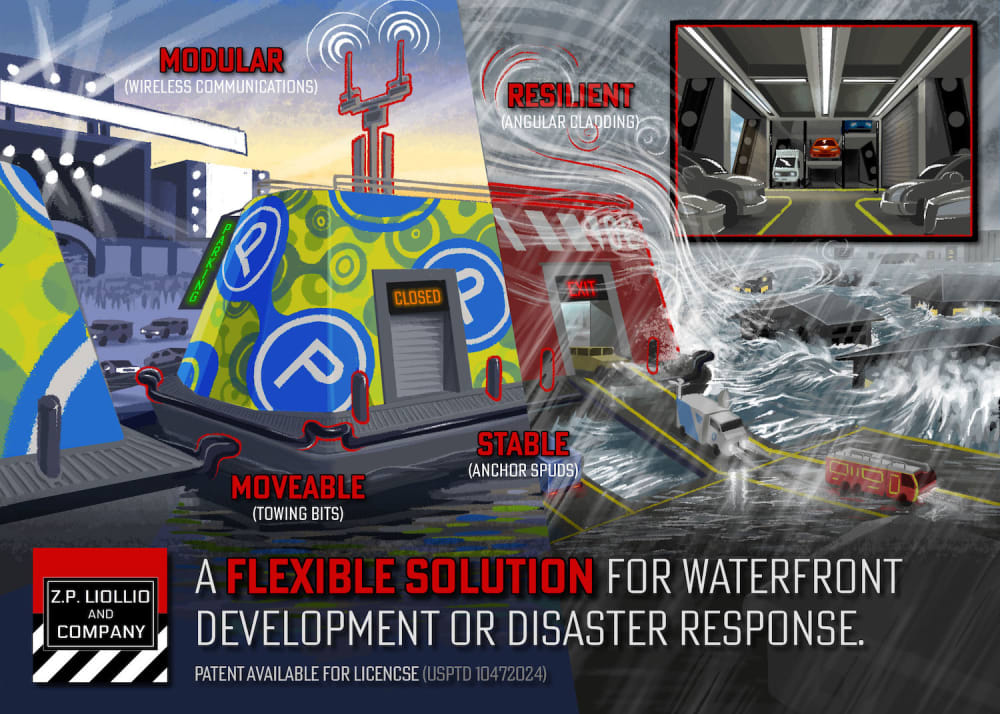Coastal cities continue to face flooding, and one solution for sustainable development is buoyancy. Floating on the surface above the rising tides, vessels have inherent seismic resistance and the lack of costly deep foundations. Modular construction of large structures also lend themselves to ease of deployment, especially in response to disasters. The waves seen on the open ocean are mitigated within the harbor for large barges and vessels. Being built on land and floated into position, either by tugboat or under their own power, negates the ever present runoff risk created with earthwork and large foundations.
Very large floating structures (VLFSs) have been theorized as an environmentally conscious solution for communications, energy, and transportation infrastructure. In the late-1990s, the “Mega-Float” runway was constructed in Tokyo Bay. Building on the “Aquapolis” city concept of Expo ‘75, it served as a feasibility study for a more permanent structure at Kansai International Airport. A permanent seaborne runway was never built, though the airport’s artificial island is steadily sinking. SpaceX has taken the ocean-going aerodrome to new heights. Fielding an “autonomous spaceport drone ship,” it can hold a position within a 10-foot tolerance in rough seas (according to Elon Musk on Twitter). In Rotterdam, a buoyant farm homed 32 dairy cows in 2019. For a round of golf on the water, see The Floating Green in Coeur d’Alene, Idaho.
Having been raised on the coast, I applied the floating structure concept to something that affected everyday life for Charlestonians. The South Carolina Lowcountry is on the threshold of natural disaster each hurricane season. City streets are continually packed with vehicles, causing headaches for locals and tourists alike. As a prospective inventor, this opportunity presented an exciting challenge. Having been raised on the coast, I applied the floating structure concept to something that affected everyday life for Charlestonians. The Citadel Graduate College’s Technical Project Management program required me to create a capstone project to showcase the lessons learned. The automotive parking barge’s first iteration was realized here.
As coastal cities and communities continue to grow, the demand for physical, earth-fast real estate has increased. Demand for where parking is needed may change for emergencies, certain seasons, and special events. In many areas, the ability to meet the demand is strained due to consistent flooding. The creation of new, buildable land can also lead to the infilling of coastal wetlands and habitat destruction. Seaborne structures also reduce the amount of construction impact flowing from the site to the sea. Besides silt, there may be site-specific concerns of soil contamination such as debris and petroleum.
The Floating Parking Barge for Vehicles provides increased parking capacity for a particular area, and could be moved under its own power or by tugboat. More importantly, the invention will also be utilized in various emergency applications, where land-based staging is unavailable or unfeasible. This is especially true when delivering aid after major hurricanes. A shallow draft reduces the infrastructure required (i.e. shallow channels and slips).
Like this entry?
-
About the Entrant
- Name:Zachary Liollio
- Type of entry:individual
- Patent status:patented

